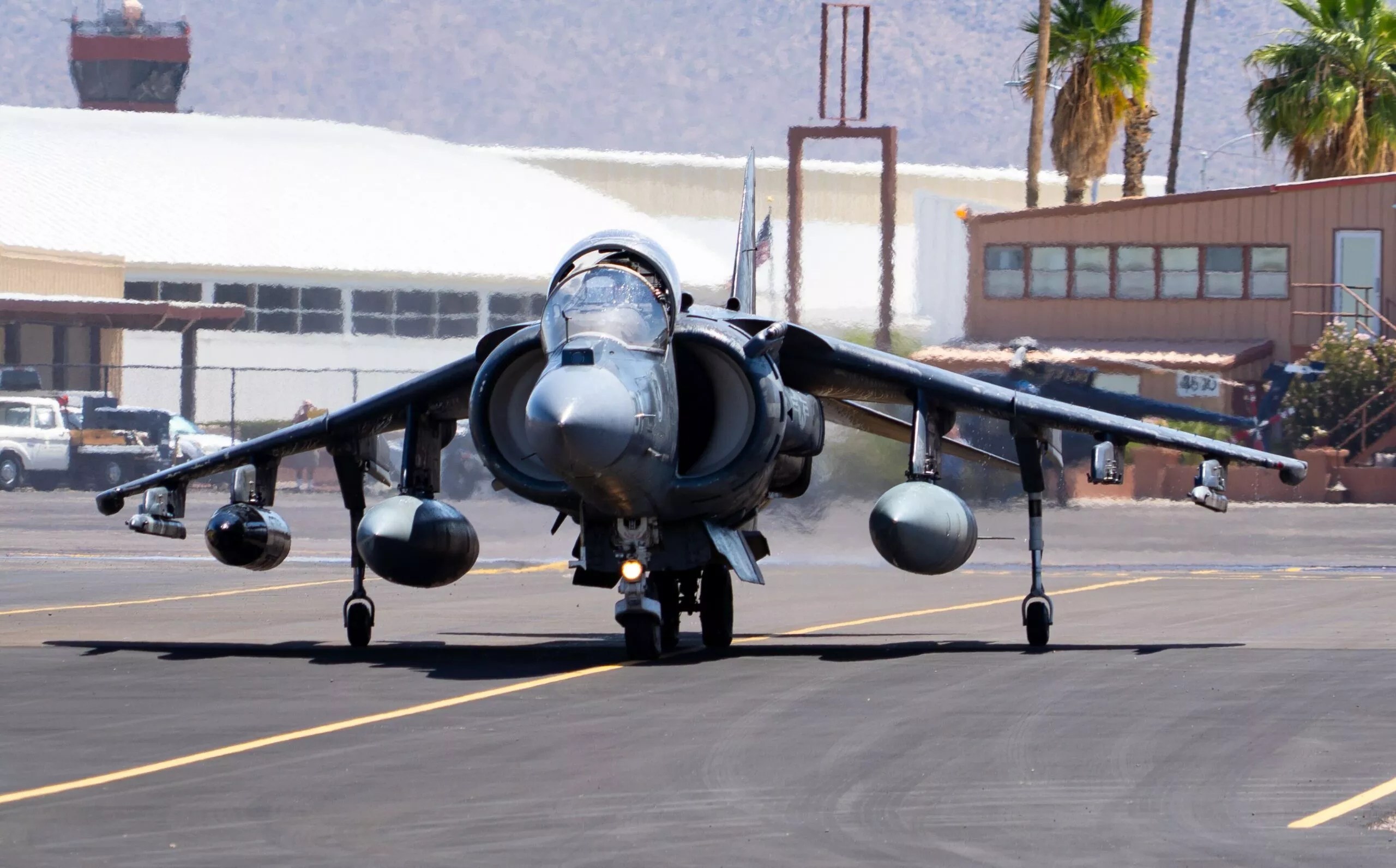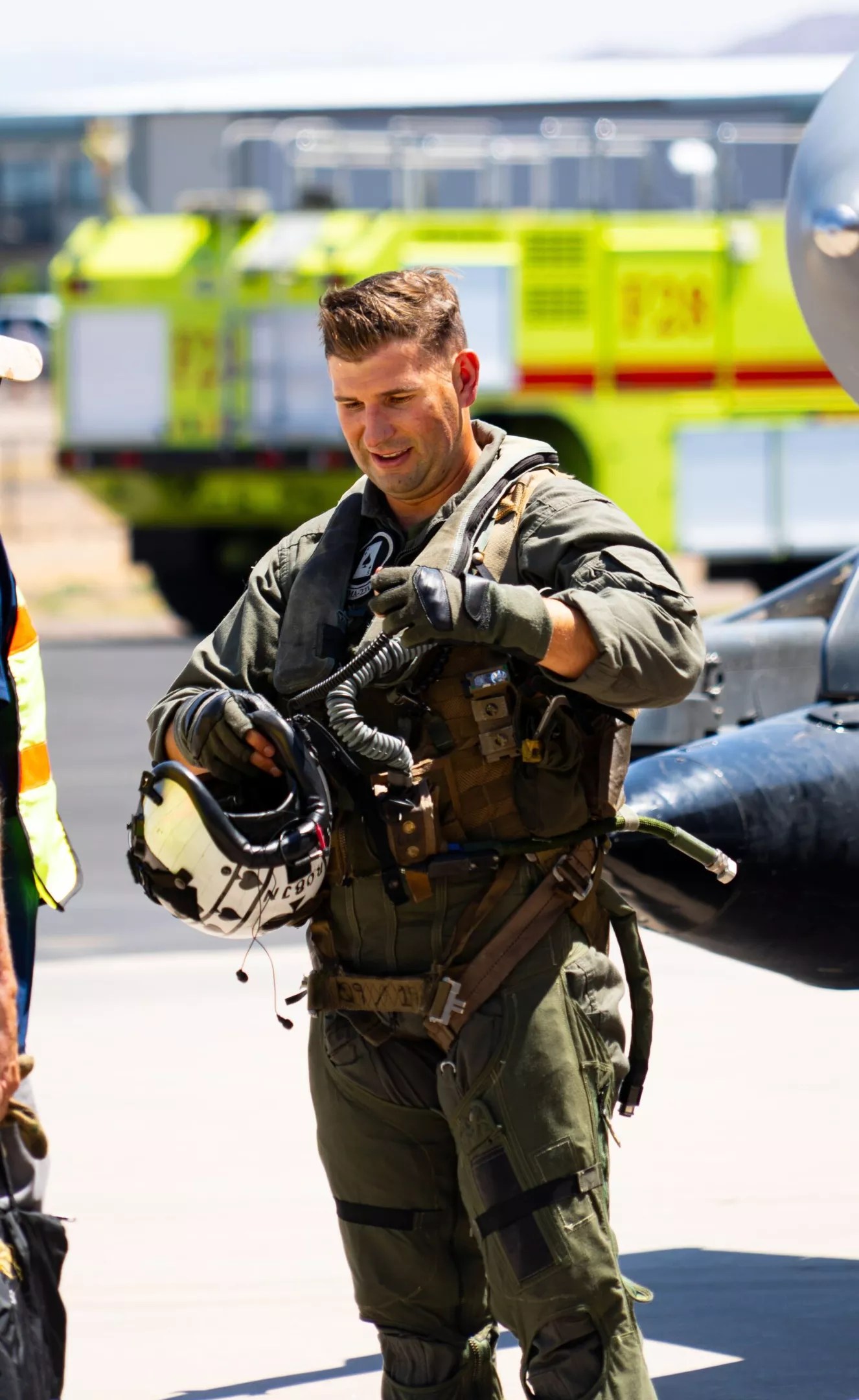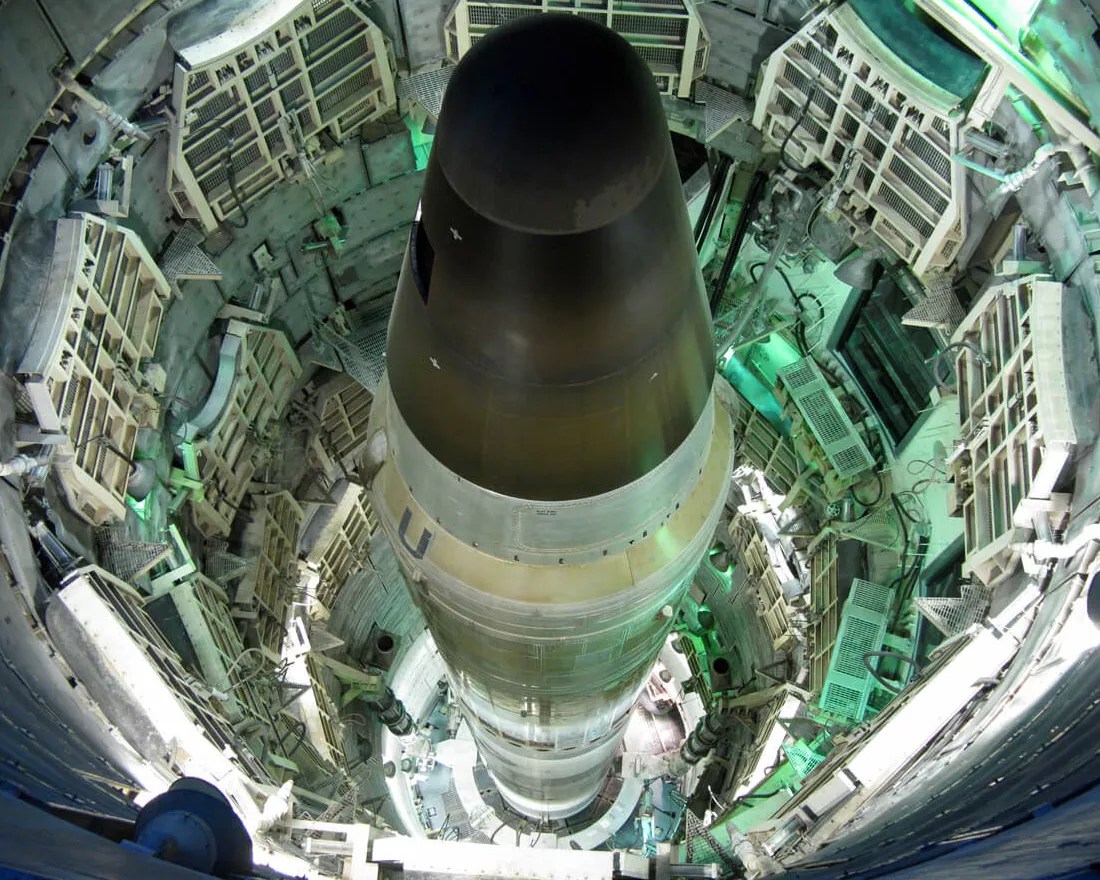
Truitt Robinson/Cronkite News

Audio By Carbonatix
With cellphones and cameras in hand, a crowd of enthusiastic people cheered and took photos and video of a Harrier AV-8B landing at Falcon Field, the latest addition to a museum celebrating the history of military aviation.
Retired Marine Corps Maj. Gen. Marty Post, who serves as an executive officer for the Arizona Commemorative Air Force Museum, said it was exciting to bring in aircraft like the AV-8B, which he says has been in use by the Marines for 40 years.
“They were in Yuma for many, many years,” Post said . “All the AV-8s left were retired out of Yuma, replaced by the Joint Strike Fighter. Of course, the last remaining Harriers were in Cherry Point, North Carolina. This squadron was the second and last squadron to stand down. So there’s one more squadron left of Harriers in the Marine Corps. It’s going to stand down next year.”
Maj. Robert Weede, known by the call sign “Robin” to his fellow Marine Corps aviators, was greeted by museum leaders and patrons on June 10 after flying the aircraft directly from the base in North Carolina.
This year, make your gift count –
Invest in local news that matters.
Our work is funded by readers like you who make voluntary gifts because they value our work and want to see it continue. Make a contribution today to help us reach our $30,000 goal!
“I flew this one and many others like it over the years,” Weede said. “A lot of combat hours on that aircraft. So shutting it down for the last time, it’s an honor.”

Marine Corps Major Robert “Robin” Weede stands on the tarmac after flying the Harrier jet to Mesa, Ariz. from Cherry Point, North Carolina. This is Weede’s last time flying this jet as the Marine Corps phases out the aircraft.
Truitt Robinson/Cronkite News
There are at least 10 military museums currently operating in Arizona, three of which specialize in aviation, including the Arizona Commemorative Air Force Museum. The other military aviation museums are the Pima Air & Space Museum (which also displays commercial aircraft) and its sister museum, the Titan Missile Museum. The missile museum features a well-preserved Titan II ICBM (inter-continental ballistic missile) in an underground silo, a part of a national system of missiles manned 24 hours a day from 1963 to 1987.
“There’s no place in the world you could go to have that experience of Cold War history,” says Brad Elliot, advertising and social media manager for the Arizona Aerospace Foundation, which runs the two museums. “You’re on the front lines of the Cold War when you’re down there, quite literally, and you’ve got your fingers on the key to start World War III.”
The foundation also opened the new Tucson Military Vehicle Museum in March.
Elliot says while there has been a decrease in international visitors to the museums in recent years, many of the visitors they see are those who take a road trip from the desert Southwest region or make the flight from New York, Chicago or Los Angeles. TV and movies play a role in driving tourism, Elliot says, especially “Top Gun: Maverick.” But he says the museums also become a place where veterans often talk about their service in ways they may not have previously shared with others.
“I’ve witnessed it firsthand, where family members will say, ‘I’ve never heard Grandpa talk like that before,’ and it’s just because he’s around the kind of airplane that he worked on or flew,” Elliot says.
In addition to military veterans and aviation enthusiasts, Elliot says the museums see tens of thousands of children each year due in part to its partnerships with schools and youth organizations.
Army veteran Trevor Brugman says visiting the Pima Air & Space museum as a child helped to encourage his eventual decision to serve.
“Seeing the SR 71 Blackbird, and just seeing the Cobra attack helicopter, that was incredible to me,” Burgman says.
While Brugman says military museums are important for preserving history, such organizations can also educate the next generation about past conflicts through the aircraft and artifacts on display.
“These are things that are real,” Brugman says. “It happened, and it’s something to learn from, so we don’t make the same mistake.”

The deactivated Titan II missile serves as the main exhibit of the Titan Missile Museum in Green Valley, Arizona.
Titan Missile Museum/Arizona Aerospace Foundation
Post says it took about a year working with the Marine Corps and the Navy to get the Harrier jet. With a model year of 2000, it is a relatively new fighter jet for any museum, especially one that has seen real-world combat, including the Global War on Terror.
“It’s just exciting for us to be able to exhibit this to the local folks here in the greater Phoenix area,” Post says.
Weede says while he appreciates the warm welcome he received at Falcon Field, the ones who deserve the appreciation are the aircraft mechanics.
“All the credit goes to them in the work they put in to keep these airplanes flying,” Weede said.
For more stories from Cronkite News, visit cronkitenews.azpbs.org.